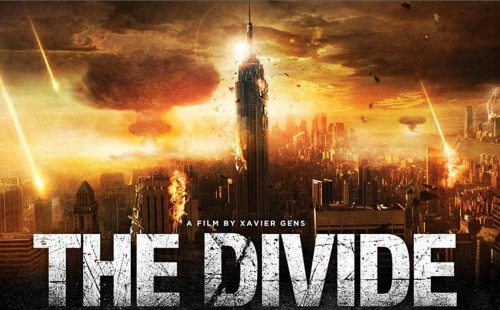
The film opens with Lauren German staring from a high-rise apartment building in New York City as nuclear missiles are falling upon the city in the distance. A frantic dash with her fiancée leads them and five others into the basement refuge of the apartment building’s superintendent, played by Biehn. Others try and get in, but Biehn closes and seals the door, just as a nuclear fireball hits the building.
Biehn’s basement fortress is just that: he’s a 9-11 survivor who has been converting the basement into a doomsday bunker, complete with generator and many other supplies. The building soon collapses around and on top of them, and the seven of them have survived the initial onslaught.
Please take note: If you watch this movie, it’s not for kids…and it’s hard on adults, myself included!
The reason it bears watching is that it can practically be a treatise on post-apocalyptic sociological-anthropological behavior. The acting is superbly believable, and the actors play the parts of their characters to a tee. The movie runs true to form as a disaster film in its “evolution” or progression from one state of human behaviors to the next.
Initially the group has a half-hearted attempt to cooperate with one another. There comes a point when tensions begin to spike: over food, which Biehn is holding out on them: he’s just providing a bare subsistence. A faction begins to form between three of the younger men who are resisting Biehn’s leadership. Regarding said leadership, Biehn is not productive, in that he isn’t actively trying to foster good teamwork and cooperation among the group.
After a while, the group is intruded upon: by a pseudo-governmental entity in biohazard suits. The encounter is not what the group has hoped for, and at the conclusion of the intrusion, one of the group is abducted. Mounting an attempt at rescue, it fails, and subsequently radiation has been introduced into the shelter and the group realizes they are on their own.
Things denigrate from there. All of the elements in the “progression of denigration,” the descent into savagery are present. There is in-fighting, torture, licentiousness, and murder. It is hard to believe upon first viewing it that Gens was able to so fluidly incorporate all of these elements, and more, into one film.
It shows the level that man can sink to when he decides to no longer control himself and his actions.
This film makes the Twilight Zone episode “The Shelter” appear to be a walk down Sesame Street. It is dark and foreboding, with very few light moments or elements of goodness and compassion. For my own part, I viewed the film as a total failure of Michael Biehn’s character to show true leadership skills and teamwork, both of which would have prevented the descent into barbarism. In my opinion, in a real-world situation of when the SHTF, you have two options:
- Exclude everyone, in which case you’ll probably have to resort to force, or
- If you accept newcomers, you’ll need to fully inculcate them into the group/family with an understanding that you’ll help them, but there are rules that need to be followed in order for all to benefit.
The setting for the film is good, because it presents a survival situation in an urban area with supplies in place prior to the S hitting the fan. Most of these films have the survivors in a semi-remote area. In this case, the film is not so much about survival and preparing, but a microcosm, a “biome,” if you will of human behavior under apocalyptic conditions. It is by far the hardest one you will ever sit through if you watch it. It was hard for me. Some might say, “Well, why watch it?” The answer is to condition and prepare yourself for scenarios that might arise and to use what you see to “game” out methods to avoid things going so far.
Remember: you’re safe in your house, watching, and it hasn’t happened yet. The shock that will come of seeing things around you as they are… cannot be overemphasized…for when the SHTF. If you can prepare yourself beforehand by observing such things and using them for training tools, as I’ve mentioned in the past, then that shock value will be decreased somewhat, as self-conditioning with these types of films is a form of mental preparation for things that will be faced down the road. It might just give you the edge, and help you to cope with issues better when the time arrives. Until later, keep fighting that good fight, and hang in there.
JJ
This article was originally published at Ready Nutrition™ on October 15th, 2016







J.J. This is why I don’t live in a city, to many variable, to much to watch! As far as new comers to a group, I agree with you, but its still a very dicey situation to say the least. There is the Christian side of me that says; help those in need, the other side ~ you reap what you sow, if you’ve failed to prepare when the signs are clear the trouble is coming well . . . . . prepare to kiss the whirlwind! My problem will be the children!!!!
The prudent see danger and take refuge, but the simple keep going and suffer for it. ~ Proverbs 27:12
I am a grizzled horror film veteran and I found this to be on of the hardest/scariest films I’ve ever seen! It is terrifying to see unbridled human nature.
added to the queue Thanks
If it’s half as good as Threads . . . :0
I don’t know if “I can’t wait to see it” is appropriate, but your description has intrigued me.
Sounds like the film will teach a valuable lesson: You can’t trust lunatic preppers, so don’t trust lunatic preppers.
Where do we find this movie?